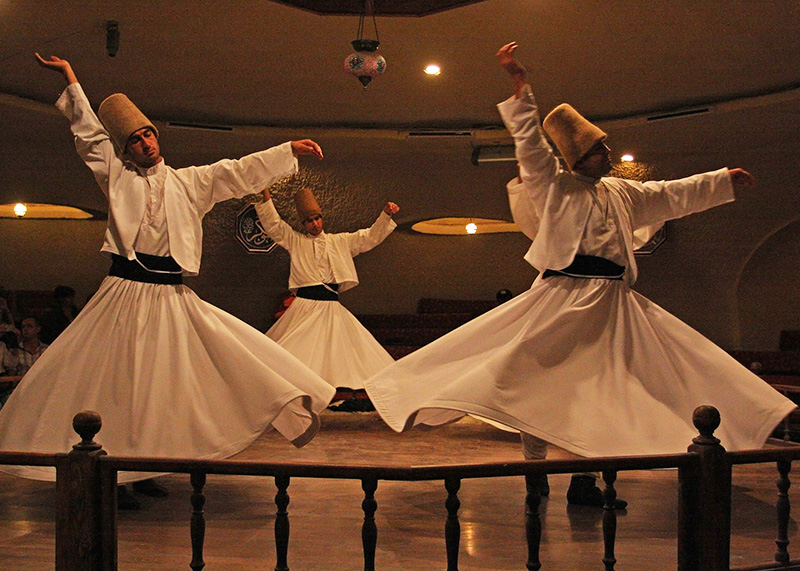The Whirling Dervishes Ceremony, also known as the Mevlevi Sema Ceremony, is a spiritual and cultural practice that originated in Turkey in the 13th century. Here is some more information about the Whirling Dervishes Ceremony:
- History: The Whirling Dervishes Ceremony was founded by the Persian mystic Rumi, who lived in the 13th century. Rumi was a poet and philosopher who believed in using music and dance to achieve spiritual enlightenment. The ceremony has since become a tradition within the Mevlevi Order, a Sufi Muslim group that follows Rumi’s teachings.
- Ceremony: The Whirling Dervishes Ceremony involves a group of men dressed in long white robes, symbolizing purity and rebirth. The dervishes perform a series of choreographed movements, including spinning in circles, while music and chanting is played. The spinning is meant to represent the rotation of the earth and the soul’s journey towards spiritual enlightenment.
- Location: The Whirling Dervishes Ceremony is performed in several locations throughout Turkey, including Istanbul, Konya, and Cappadocia. The ceremony is often held in ancient buildings, such as old caravanserais, mosques, or in special cultural centers designed for the purpose.
- Meaning: The Whirling Dervishes Ceremony is a symbol of unity, devotion, and spiritual enlightenment. The spinning is meant to help the dervishes transcend their physical body and connect with the divine. The ceremony is also a way to honor the teachings of Rumi and the Mevlevi Order.
- Attending the Ceremony: Visitors to Turkey can attend the Whirling Dervishes Ceremony as a cultural experience. It is important to dress appropriately for the occasion, with modest clothing and shoes that are easy to remove. Visitors are also expected to remain quiet and respectful during the ceremony.
Overall, the Whirling Dervishes Ceremony is a unique and spiritual experience that offers insight into Turkish culture and history. It is a way to connect with the country’s rich heritage and witness a beautiful expression of devotion and unity.

Leave a Reply